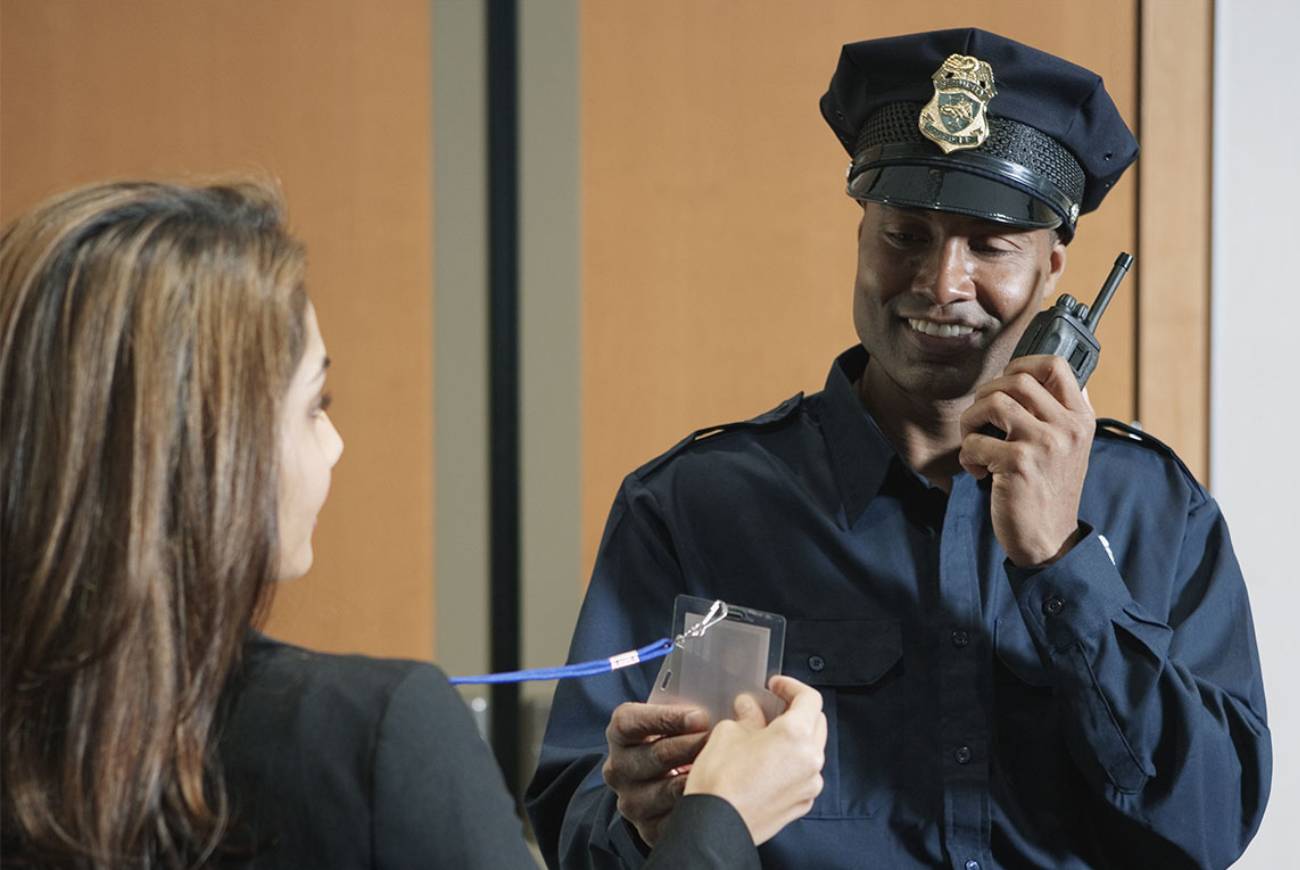SASKATCHEWAN BASIC SECURITY TRAINING (SBST) – 40 HRS
149
About this course
Syllabus
The Saskatchewan Basic Security Training (SBST) consists of twelve (12) specific modules instructed in a classroom or online environment over a period of forty (40) hours. At the completion of the SBST Course, participants must write the provincial exam, must achieve 75% or above then will be ready to apply for a security guard licence. The 12 units are noted below: Introduction The Duties and Responsibilities of a Security Guard Conduct of Security Guards The Security Guard and the Legal System Access Control and Alarm Systems Traffic Control Note Taking and Report Writing Fire! Bomb Threats General Patrol Tactics and Techniques Labour Disputes Safety Issues for Security Guards
Unit 0 - Introduction to the Course
Introduction to the Course
You have chosen to become a security guard in Saskatchewan! The law says that you must receive 40-hours of training. This online course is designed to help you pass the provincial exam, earn your security guard certificate and licence! This course was written directly for you, online and in a workbook style.
Unit 1 - Introduction and Provincial Legislation
Introduction and Provincial Legislation
This unit will help you learn how to: Understand the responsibilities of a security guard in the province Understand time allocation and course content Requirements of Security Guards Understand the Private Investigators and Security Guards Act, 1997
Unit 2 - The Duties and Responsibilities of a Security Guard
The Duties and Responsibilities of a Security Guard
This unit will help you learn to: Describe the different duties of security guards Give examples of how security guards protect people Tell how security guards protect property Keep confidential things confidential Tell what post orders are and what's included in them
Unit 3 - Conduct of Security Professionalism and Public Relations
Conduct of Security Professionalism and Public Relations
This unit will help you learn how to: Present a professional appearance to the public. Be professional in your attitude and your actions. Use the general principles of good public relations. Use effective interviewing skills. Deal with difficult or angry people. Interact with a wide variety of. Communicate without discrimination or harassment. Understand crowds and how they are controlled. Do your duties during labour disputes. Deal with the media
Unit 4 - The Security Guard and the Legal System
The Security Guard and the Legal System
This unit will help you learn how to: Tell how the Criminal Code of Canada and the Canadian Charter of Rights and Freedoms relate to the work of a security guard. List the types of offences under the Criminal Code of Canada and give examples of each. Explain the legal status of a security guard. Discuss, with examples, a citizen’s powers of arrest and Discuss use of force. Discuss when and how a security guard can search someone and seize something from them. Explain the legal powers of security guards in situations of trespassing and vandalism. Explain the rights of tenants and landlords in Manitoba. Tell how security guards are licenced in Manitoba. Tell what can happen to a security guard if they overstep their authority.
Unit 5 - Access Control & Alarm Systems
Access Control & Alarm Systems
This unit will help you learn how to: Control access in different areas of a site. Use different ways to control access. Describe the parts of an alarm system and what they do. Use different types of alarm systems. Respond to an alarm. Give examples of common causes of false alarms.
Unit 6 - Traffic Control
Traffic Control
This unit will help you learn how to: Tell when a security guard can legally control traffic in Saskatchewan. Use standard hand signals for controlling traffic. Keep yourself safe when directing traffic. Direct emergency vehicles when you are controlling traffic. Correctly report a motor vehicle accident in Saskatchewan.
Unit 7 - Note Taking, Reports and Evidence
Note Taking, Reports and Evidence
This unit will help you learn how to: Improve your observations skills use your notebook correctly. write a detailed report that is easy to read. properly secure a crime scene and preserve evidence. tell the difference between different types of evidence. Prepare yourself to testify in court.
Unit 8 - Fire!
Fire!
This unit will help you learn how to: Detect fire hazards. Operate a fire extinguisher. Tell what a security guard should do during a fire emergency. Understand a fire safety plan. Explain the operation of basic fire suppression systems.
Unit 9 - Bomb Threats
Bomb Threats
This unit will help you learn how to: Tell what kinds of people make bomb threats and why. Respond to a bomb threat over the telephone. Fill in a Bomb Threat Check List. Describe what a Security Guard must do after receiving a bomb threat. Search for suspicious objects. Know what to look for and what to do if you find something suspicious.
Unit 10 - General Patrol Tactics and Techniques
General Patrol Tactics and Techniques
This unit will help you learn how to: Tell why patrols are important. Prepare for a patrol. Patrol a site. Keep yourself safe while patrolling. Use your powers of observation well.
Unit 11 - Labour Disputes
Labour Disputes
This unit will help you learn: What a labour dispute is; How the Charter of Rights impacts the strikers.: What Security Guards do during a strike.; What to look for during a strike; How to deal with the media; The difference between a “legal” and “illegal” strike.
Unit 12 - Working Safely
Working Safely
This unit will help you learn how to: State the purpose of The Saskatchewan Employment Act and The Occupational Health and Safety Regulations. State your responsibilities. Describe a Working Alone Plan. Assess and minimize risks. Identify WHMIS as law. Recognize the different classes and symbols. Read WHMIS labels, supplier labels, and workplace labels. State what clandestine labs are. Identify Aboriginal-Based gangs



